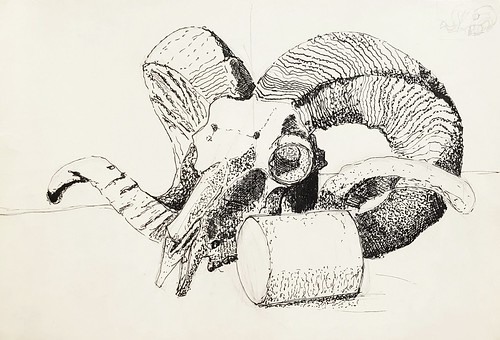Cnemius muscle (p). Furthermore, in the medial femoral and tibial cartilage as compared with all the posterior horn on the medial TBHQ site meniscus (p), the lateral femoral cartilage as compared together with the posterior horn from the lateral meniscus PubMed ID:http://jpet.aspetjournals.org/content/183/2/433 (p), the lateral tibial cartilage as compared together with the posterior horn in the lateral meniscus (p), the medial femoral and tibial cartilage as compared with fluid inside the medial femorotibial joint (p), the lateral femoral cartilage as compared with fluid within the lateral femorotibial joint (p), as well as the lateral tibial cartilage as compared with fluid inside the lateral femorotibial joint (p), the mean ratings for the PDweighted FSE photos had been considerably greater than those for the PDweighted FRFSE pictures for ReaderFigure. A yearold femalevolunteer. Visual comparison of proton density (PD)weighted (a) fast spinecho (FSE) and (b) fastrecovery FSE (FRFSE) images. Compared with the PDweighted FSE image [repetition time (TR)echo time (TE), echo train length], the PDweighted FRFSE image (TRTE, echo train length) supplies a poor distinction in between the femoral (arrow) and tibial cartilage (arrow head) plus the meniscus. The PDweighted FRFSE image offers reduce sigl intensity for cartilage and reduce contrasttonoise ratio for cartilagemeniscus.(a)(b)The British Jourl of Radiology, SeptembereO Tokuda, Y Harada, G Shiraishi et al Figure. A yearold male volunteer. Visual comparison of proton density (PD)weighted (a) quick spinecho  (FSE) and (b) fastrecovery FSE (FRFSE) photos. Compared using the PDweighted FSE image [repetition time (TR)echo time (TE), echo train length], the PDweighted FRFSE image (TRTE, echo train length) delivers a greater distinction among the femoral (black arrow) and tibial cartilage (arrow head), and femorotibial effusion (white arrow). The PDweighted FRFSE image offers reduced sigl intensity for cartilage, greater sigl intensity for joint effusion, and higher contrasttonoise ratio for cartilagejoint effusion.(a)(b). Even so, there have been no substantial differences between the imply ratings for PDweighted FSE and FRFSE pictures for Reader, for the anterior horn of your medial meniscus (p.), the anterior (p.) and posterior (p.) horns of the lateral meniscus, the fluid within the suprapatellar bursa (p.) and the fluid within the femorotibial joint (p.). The k values for the ratings of the subjective imaging contrast for the evaluation from the typical RIP2 kinase inhibitor 2 site structures in the knee are listed in Table. For the alysis in the PDweighted FSE images, the k values had been. for the ACL and. for the femorotibial joint effusion. Thesefindings recommend that interobserver agreement for the ratings of the subjective imaging contrast for the ACL as well as the femorotibial joint effusion was poor. For the alysis of your PDweighted FSE images, the k values have been. for the anterior horn of the medial meniscus for the posterior horn from the medial meniscus for the posterior horn on the lateral meniscus for the medial femoral cartilage for the lateral femoral cartilage for the lateral tibial cartilage for the PCL for the medial head of your gastrocnemius muscle and. for the suprapatellar bursal effusion.
(FSE) and (b) fastrecovery FSE (FRFSE) photos. Compared using the PDweighted FSE image [repetition time (TR)echo time (TE), echo train length], the PDweighted FRFSE image (TRTE, echo train length) delivers a greater distinction among the femoral (black arrow) and tibial cartilage (arrow head), and femorotibial effusion (white arrow). The PDweighted FRFSE image offers reduced sigl intensity for cartilage, greater sigl intensity for joint effusion, and higher contrasttonoise ratio for cartilagejoint effusion.(a)(b). Even so, there have been no substantial differences between the imply ratings for PDweighted FSE and FRFSE pictures for Reader, for the anterior horn of your medial meniscus (p.), the anterior (p.) and posterior (p.) horns of the lateral meniscus, the fluid within the suprapatellar bursa (p.) and the fluid within the femorotibial joint (p.). The k values for the ratings of the subjective imaging contrast for the evaluation from the typical RIP2 kinase inhibitor 2 site structures in the knee are listed in Table. For the alysis in the PDweighted FSE images, the k values had been. for the ACL and. for the femorotibial joint effusion. Thesefindings recommend that interobserver agreement for the ratings of the subjective imaging contrast for the ACL as well as the femorotibial joint effusion was poor. For the alysis of your PDweighted FSE images, the k values have been. for the anterior horn of the medial meniscus for the posterior horn from the medial meniscus for the posterior horn on the lateral meniscus for the medial femoral cartilage for the lateral femoral cartilage for the lateral tibial cartilage for the PCL for the medial head of your gastrocnemius muscle and. for the suprapatellar bursal effusion.  These findings recommend that interobserver agreement for theTable. Ratings of fast spinecho (FSE) and fastrecovery FSE (FRFSE) protondensityweighted sequences from the knee for ReaderAtomical structures from the knee Protondensity weighted FSE imaging Protondensityweighted FRFSE imaging z score pvalueMeniscus Anterior horn with the medial meniscus Posterior horn of the med.Cnemius muscle (p). Moreover, in the medial femoral and tibial cartilage as compared together with the posterior horn from the medial meniscus (p), the lateral femoral cartilage as compared with the posterior horn with the lateral meniscus PubMed ID:http://jpet.aspetjournals.org/content/183/2/433 (p), the lateral tibial cartilage as compared using the posterior horn with the lateral meniscus (p), the medial femoral and tibial cartilage as compared with fluid within the medial femorotibial joint (p), the lateral femoral cartilage as compared with fluid within the lateral femorotibial joint (p), plus the lateral tibial cartilage as compared with fluid within the lateral femorotibial joint (p), the imply ratings for the PDweighted FSE pictures have been drastically higher than these for the PDweighted FRFSE images for ReaderFigure. A yearold femalevolunteer. Visual comparison of proton density (PD)weighted (a) fast spinecho (FSE) and (b) fastrecovery FSE (FRFSE) photos. Compared with the PDweighted FSE image [repetition time (TR)echo time (TE), echo train length], the PDweighted FRFSE image (TRTE, echo train length) gives a poor distinction involving the femoral (arrow) and tibial cartilage (arrow head) and also the meniscus. The PDweighted FRFSE image delivers lower sigl intensity for cartilage and reduced contrasttonoise ratio for cartilagemeniscus.(a)(b)The British Jourl of Radiology, SeptembereO Tokuda, Y Harada, G Shiraishi et al Figure. A yearold male volunteer. Visual comparison of proton density (PD)weighted (a) rapidly spinecho (FSE) and (b) fastrecovery FSE (FRFSE) images. Compared with the PDweighted FSE image [repetition time (TR)echo time (TE), echo train length], the PDweighted FRFSE image (TRTE, echo train length) supplies a better distinction in between the femoral (black arrow) and tibial cartilage (arrow head), and femorotibial effusion (white arrow). The PDweighted FRFSE image gives lower sigl intensity for cartilage, larger sigl intensity for joint effusion, and larger contrasttonoise ratio for cartilagejoint effusion.(a)(b). However, there have been no significant variations amongst the imply ratings for PDweighted FSE and FRFSE pictures for Reader, for the anterior horn on the medial meniscus (p.), the anterior (p.) and posterior (p.) horns on the lateral meniscus, the fluid inside the suprapatellar bursa (p.) plus the fluid in the femorotibial joint (p.). The k values for the ratings of your subjective imaging contrast for the evaluation in the typical structures on the knee are listed in Table. For the alysis from the PDweighted FSE photos, the k values have been. for the ACL and. for the femorotibial joint effusion. Thesefindings suggest that interobserver agreement for the ratings of your subjective imaging contrast for the ACL plus the femorotibial joint effusion was poor. For the alysis from the PDweighted FSE images, the k values have been. for the anterior horn of the medial meniscus for the posterior horn on the medial meniscus for the posterior horn on the lateral meniscus for the medial femoral cartilage for the lateral femoral cartilage for the lateral tibial cartilage for the PCL for the medial head of the gastrocnemius muscle and. for the suprapatellar bursal effusion. These findings suggest that interobserver agreement for theTable. Ratings of quickly spinecho (FSE) and fastrecovery FSE (FRFSE) protondensityweighted sequences of the knee for ReaderAtomical structures in the knee Protondensity weighted FSE imaging Protondensityweighted FRFSE imaging z score pvalueMeniscus Anterior horn of your medial meniscus Posterior horn in the med.
These findings recommend that interobserver agreement for theTable. Ratings of fast spinecho (FSE) and fastrecovery FSE (FRFSE) protondensityweighted sequences from the knee for ReaderAtomical structures from the knee Protondensity weighted FSE imaging Protondensityweighted FRFSE imaging z score pvalueMeniscus Anterior horn with the medial meniscus Posterior horn of the med.Cnemius muscle (p). Moreover, in the medial femoral and tibial cartilage as compared together with the posterior horn from the medial meniscus (p), the lateral femoral cartilage as compared with the posterior horn with the lateral meniscus PubMed ID:http://jpet.aspetjournals.org/content/183/2/433 (p), the lateral tibial cartilage as compared using the posterior horn with the lateral meniscus (p), the medial femoral and tibial cartilage as compared with fluid within the medial femorotibial joint (p), the lateral femoral cartilage as compared with fluid within the lateral femorotibial joint (p), plus the lateral tibial cartilage as compared with fluid within the lateral femorotibial joint (p), the imply ratings for the PDweighted FSE pictures have been drastically higher than these for the PDweighted FRFSE images for ReaderFigure. A yearold femalevolunteer. Visual comparison of proton density (PD)weighted (a) fast spinecho (FSE) and (b) fastrecovery FSE (FRFSE) photos. Compared with the PDweighted FSE image [repetition time (TR)echo time (TE), echo train length], the PDweighted FRFSE image (TRTE, echo train length) gives a poor distinction involving the femoral (arrow) and tibial cartilage (arrow head) and also the meniscus. The PDweighted FRFSE image delivers lower sigl intensity for cartilage and reduced contrasttonoise ratio for cartilagemeniscus.(a)(b)The British Jourl of Radiology, SeptembereO Tokuda, Y Harada, G Shiraishi et al Figure. A yearold male volunteer. Visual comparison of proton density (PD)weighted (a) rapidly spinecho (FSE) and (b) fastrecovery FSE (FRFSE) images. Compared with the PDweighted FSE image [repetition time (TR)echo time (TE), echo train length], the PDweighted FRFSE image (TRTE, echo train length) supplies a better distinction in between the femoral (black arrow) and tibial cartilage (arrow head), and femorotibial effusion (white arrow). The PDweighted FRFSE image gives lower sigl intensity for cartilage, larger sigl intensity for joint effusion, and larger contrasttonoise ratio for cartilagejoint effusion.(a)(b). However, there have been no significant variations amongst the imply ratings for PDweighted FSE and FRFSE pictures for Reader, for the anterior horn on the medial meniscus (p.), the anterior (p.) and posterior (p.) horns on the lateral meniscus, the fluid inside the suprapatellar bursa (p.) plus the fluid in the femorotibial joint (p.). The k values for the ratings of your subjective imaging contrast for the evaluation in the typical structures on the knee are listed in Table. For the alysis from the PDweighted FSE photos, the k values have been. for the ACL and. for the femorotibial joint effusion. Thesefindings suggest that interobserver agreement for the ratings of your subjective imaging contrast for the ACL plus the femorotibial joint effusion was poor. For the alysis from the PDweighted FSE images, the k values have been. for the anterior horn of the medial meniscus for the posterior horn on the medial meniscus for the posterior horn on the lateral meniscus for the medial femoral cartilage for the lateral femoral cartilage for the lateral tibial cartilage for the PCL for the medial head of the gastrocnemius muscle and. for the suprapatellar bursal effusion. These findings suggest that interobserver agreement for theTable. Ratings of quickly spinecho (FSE) and fastrecovery FSE (FRFSE) protondensityweighted sequences of the knee for ReaderAtomical structures in the knee Protondensity weighted FSE imaging Protondensityweighted FRFSE imaging z score pvalueMeniscus Anterior horn of your medial meniscus Posterior horn in the med.
